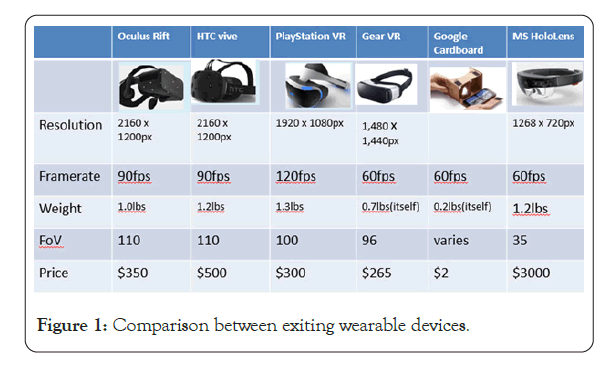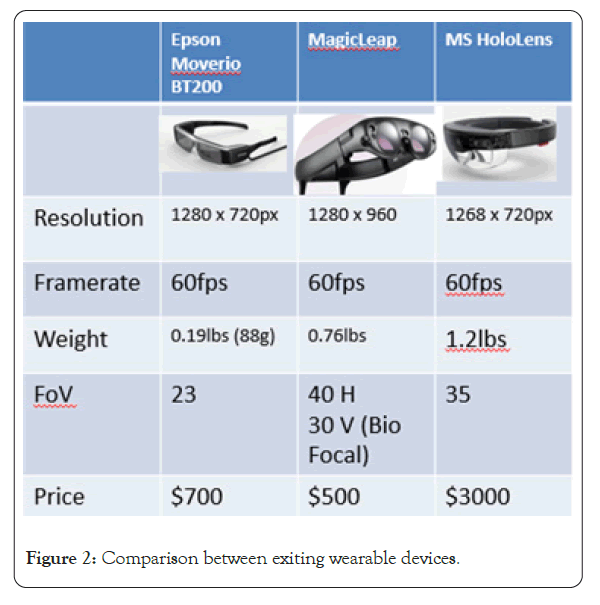Internal Medicine: Open Access
Open Access
ISSN: 2165-8048
ISSN: 2165-8048
Short Communication - (2021)Volume 11, Issue 2
There is no doubt that Augmented Reality (AR) and Virtual Reality (VR) have the potential to become a fascinating widespread technology not only in computer graphics but also in many other subjects. In about two decades, AR or in general, Mixed Reality (MR) has turned into one of the most attractive topics in involved in variety of topics attempting to obtain satisfactory results. Realism and robust AR system is the open issue yet. In this speech, I am going to present what I have done so far in realism, robustness and interaction of AR/VR systems and discuss possibility directions toward this enhancement of AR and VR. Moreover, interaction between real and virtual objects will be discussed in details. How to engage our current research with new technology to enhance our current research will be the next part of my speech. At the end, some points will be highlighted to go further with the future of VR and AR along with wearable technology.
Augmented Reality; Virtual Reality; Mixed Reality; Wearable Technology
Realism in augmented and virtual reality
Realistic rendering technique of outdoor Augmented Reality (AR) has been an attractive topic since last two decades due to the large number of publications in computer graphics. Realistic virtual objects in outdoor rendering AR systems require sophisticated effects such as shadows, daylight and interaction between sky colour and virtual as well as real objects. A few realistic rendering techniques have been proposed to overcome this issue most of which are related to non-real-time rendering. However, this problem still persists especially in outdoor rendering. This research proposed a new technique to achieve realistic real-time outdoor rendering taking into account the interaction between sky colour and objects in AR systems with respect to shadows in any specific location, date and time. This approach involved four main phases, which cover different outdoor AR rendering requirements. In the first phase, sky colour was generated with respect to the sun position. The second phase involved the shadow generation algorithm which is called Hybrid Shadow Mapping (HSM). During this phase some improvements in shadow volume and projection shadow are employed. The third phase started with the introduction of a coherent formula for the sun position and shadows in any specific location, date and time. The coherent formula aims to find the shadow positioning automatically. This phase also addressed the interaction between sky colour and objects in virtual environments. Finally, a technique to integrate sky colour and shadows through the effects of sky colour on virtual objects in the AR system is proposed. The experimental results reveal that the proposed technique has significantly improved the realism of real- time outdoor AR rendering thus solving the problem of realistic AR systems [1,2].
Interaction in augmented reality
To achieve realistic Augmented Reality (AR), shadows play an important role in creating a 3-D impression of a scene. Casting virtual shadows on real and virtual objects is one of the topics of research being conducted in this area. In this paper, we propose a new method for creating complex AR indoor scenes using real time depth detection to exert virtual shadows on virtual and real environments. A Kinect camera was used to produce a depth map for the physical scene mixing into a single real-time transparent tacit surface. Once this is created, the camera's position can be tracked from the reconstructed 3-D scene. Real objects are represented by virtual object phantoms in the AR scene enabling users holding a webcam and a standard Kinect camera to capture and reconstruct environments simultaneously. The tracking capability of the algorithm is shown and the findings are assessed drawing upon qualitative and quantitative methods making comparisons with previous AR phantom generation applications. The results demonstrate the robustness of the technique for realistic indoor rendering in AR systems [3].
Virtual heritage in augmented reality
Today’s modern organizations are striving hard to trace the beginnings of human civilization and maintain cultural heritage throughout the world; as a result the need for an integrative technique materializing this dream is felt more than ever. Realistic historical buildings in outdoor rendering Augmented Reality (AR) systems require sophisticated effects such as shadows, lighting and the ability to reveal the effect of sky dome illumination on virtual as well as real objects. In this project, the sun position and sky colour are simulated using Julian dating and Perez model respectively. The historical buildings are pre-created using Light Wave 3-D. An AR system is created using a new marker-less camera setting. The sky illumination is exerted on the virtual historical buildings using a Hemicube Radiosity technique. We have tested the proposed method on Portuguese Malacca heritage building (Melaka, Malaysia) in different places to reveal the auto-adjustment of the system in the case of shadow positioning, lighting and the sky’s illumination. The final system could be installed on HMD (Head Mounted Display) or in our device called ReVit Age to show the realistic reconstructed virtual heritage buildings, taking the main outdoor illumination components into account. Throughout this method, listed heritage buildings can be revived in the minds of people from different backgrounds who share the same ambitious dream. It is strongly hoped that this idea can make historical buildings a virtual reality; closer to people’s hearts [4].
Brain computer interface
A Brain-Computer Interface (BCI) is the device that can read and acquire the brain activities. A human body is controlled by Brain- Signals, which considered as a main controller. Furthermore, the human emotions and thoughts will be translated by brain through brain signals and expressed as human mood. This controlling process mainly performed through brain signals, the brain signals is a key component in electroencephalogram (EEG). Based on signal processing the features representing human mood (behaviour) could be extracted with emotion as a major feature. This paper proposes a new framework in order to recognize the human inner emotions that have been conducted on the basis of EEG signals using a BCI device controller. This framework go through five steps starting by classifying the brain signal after reading it in order to obtain the emotion, then map the emotion, synchronize the animation of the 3-D virtual human, test and evaluate the work. Based on our best knowledge there is no framework for controlling the 3-D virtual human. As a result for implementing our framework will enhance the game field of enhancing and controlling the 3-D virtual humans’ emotion walking in order to enhance and bring more realistic as well. Commercial games and Augmented Reality systems are possible beneficiaries of this technique [5,6].
Wearable devices
In terms of wearable AR/VR devices the following details Figure 1 and Figure 2 have been discussed in this talk.

Figure 1: Comparison between exiting wearable devices.

Figure 2: Comparison between exiting wearable devices.
Citation: Kolivand H (2021) Current and feature of wearable devices in Augmented and Virtual Reality. Intern Med. 11:332.
Received: 03-Feb-2021 Accepted: 17-Feb-2021 Published: 24-Feb-2021 , DOI: 10.35248/2165-8048.21.11.332
Copyright: © 2021 Kolivand H. This is an open-access article distributed under the terms of the Creative Commons Attribution License, which permits unrestricted use, distribution, and reproduction in any medium, provided the original author and source are credited.